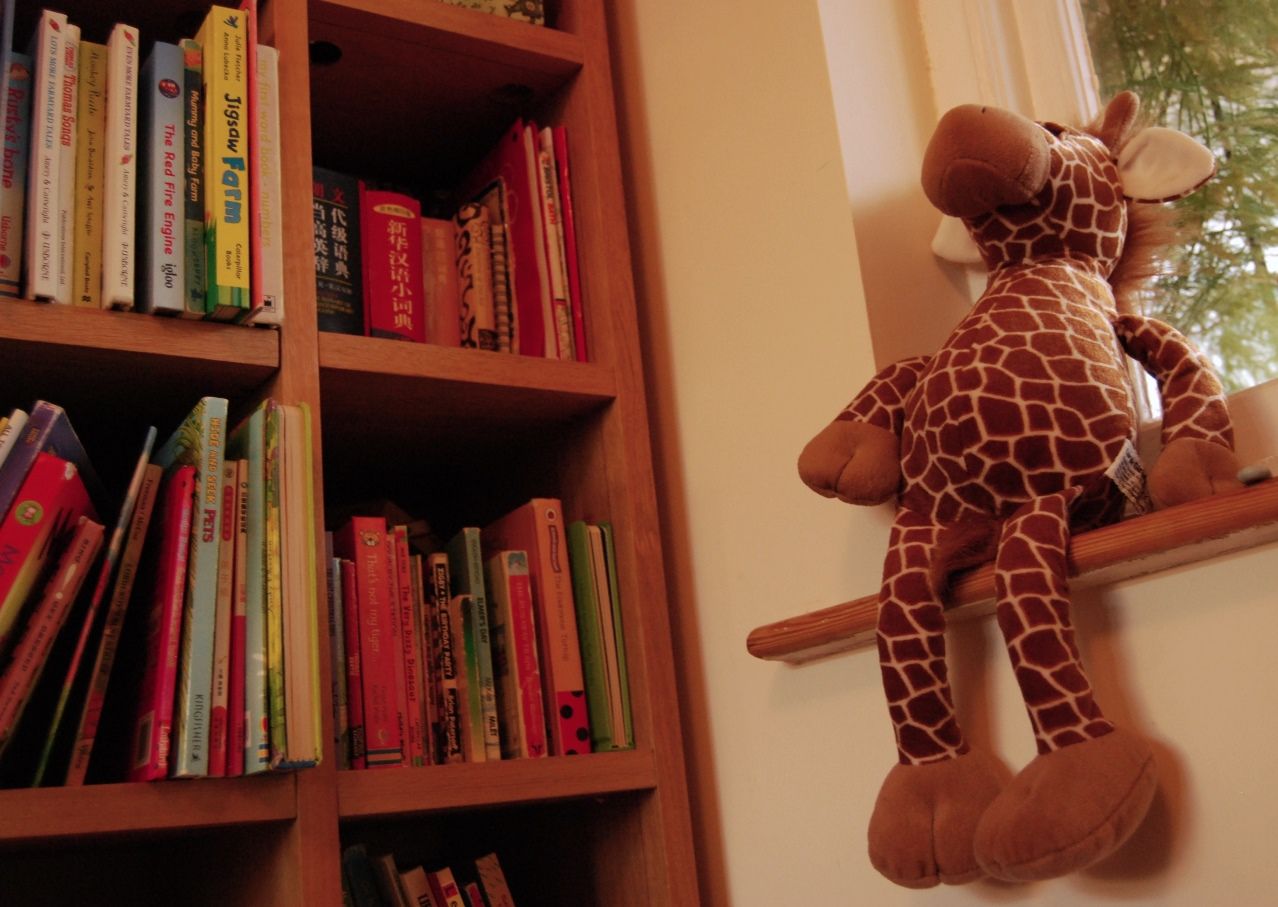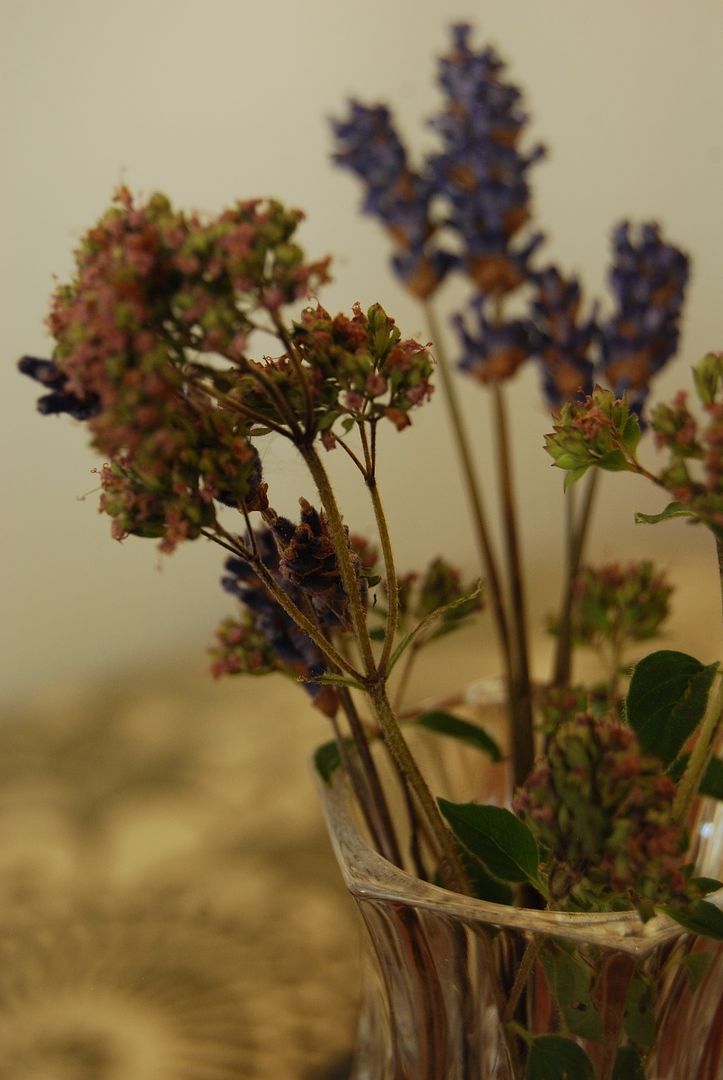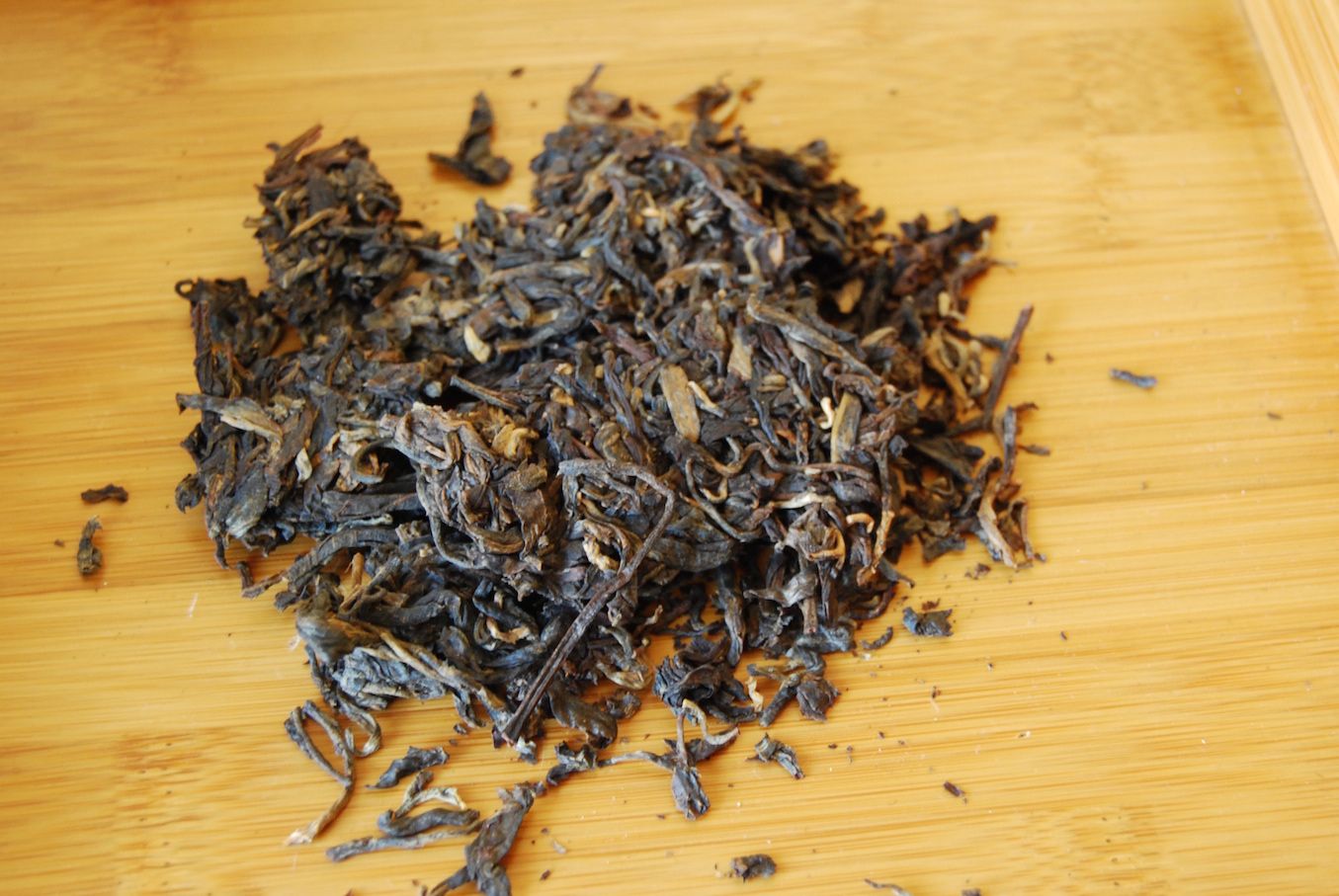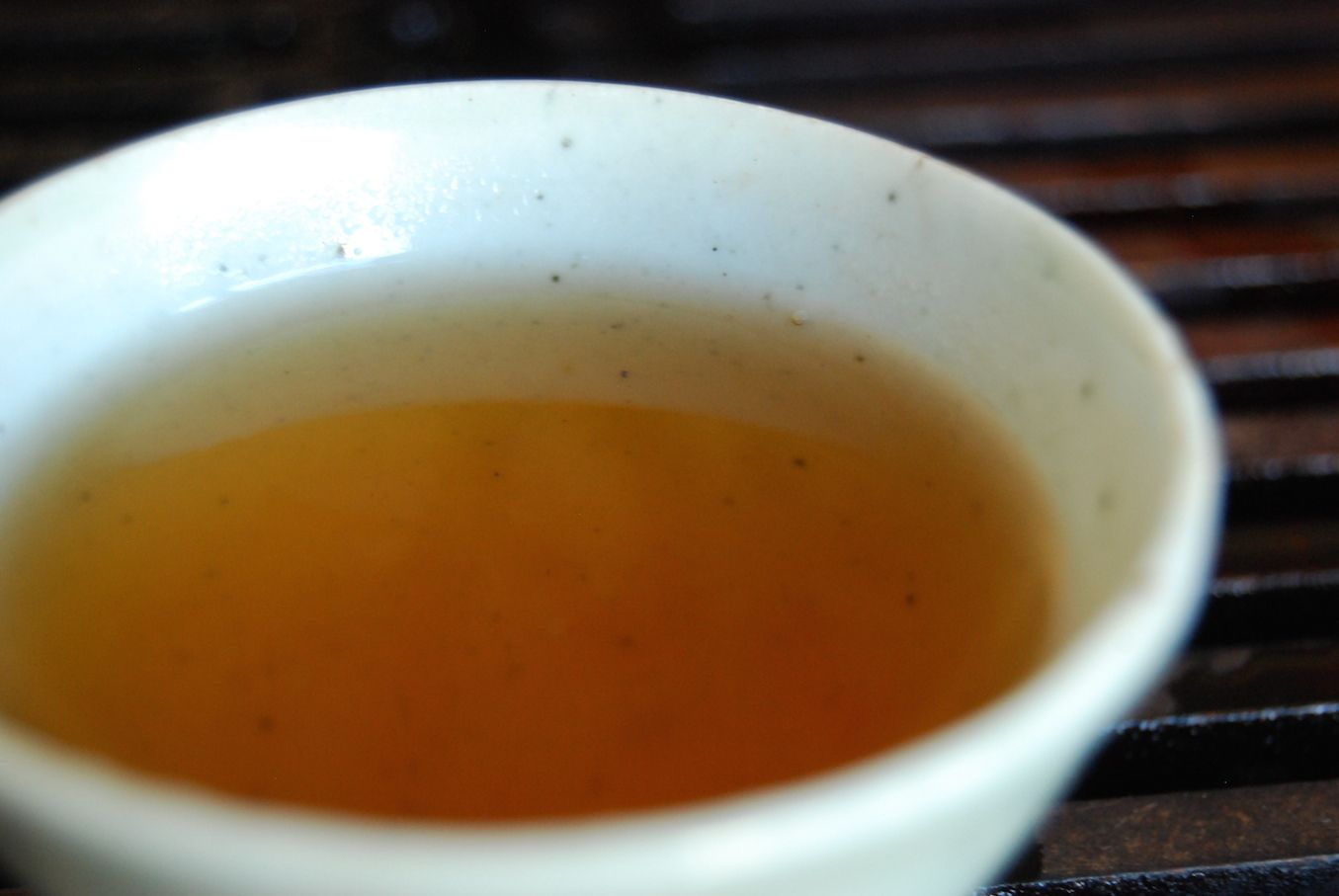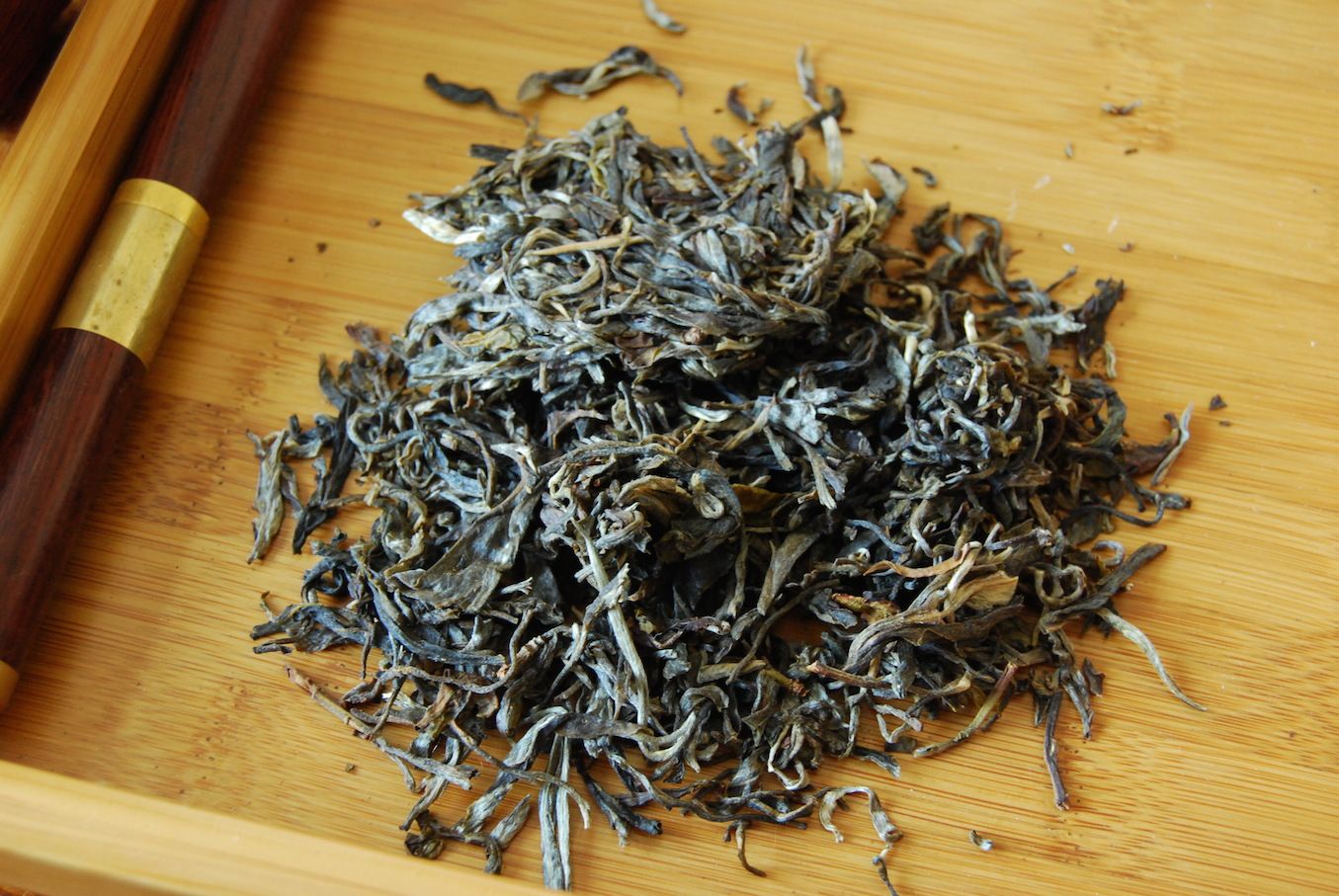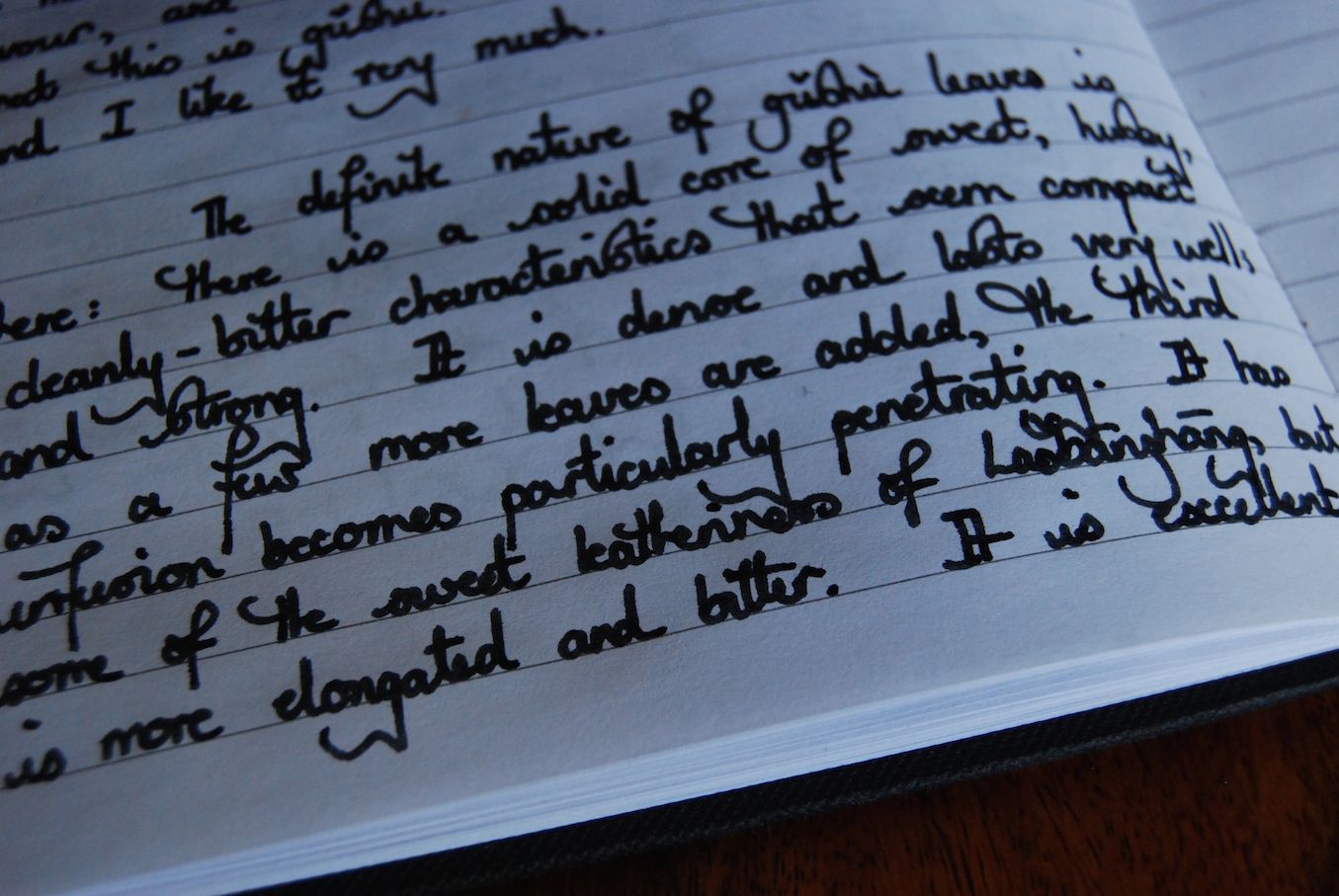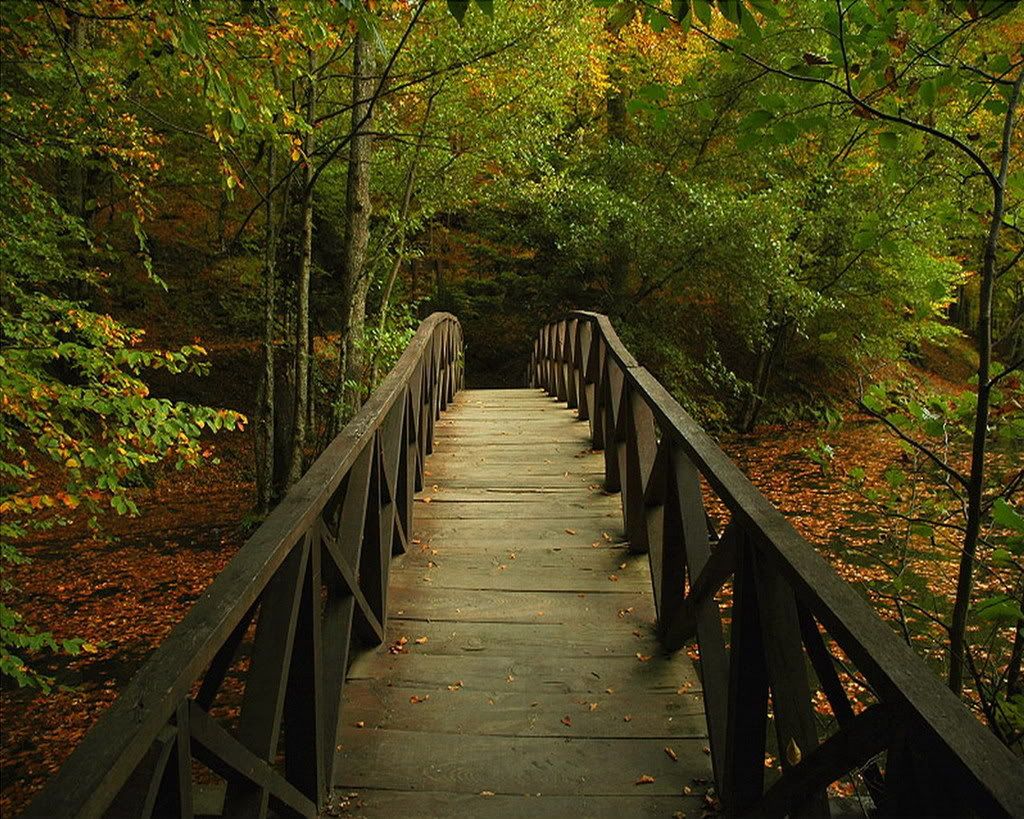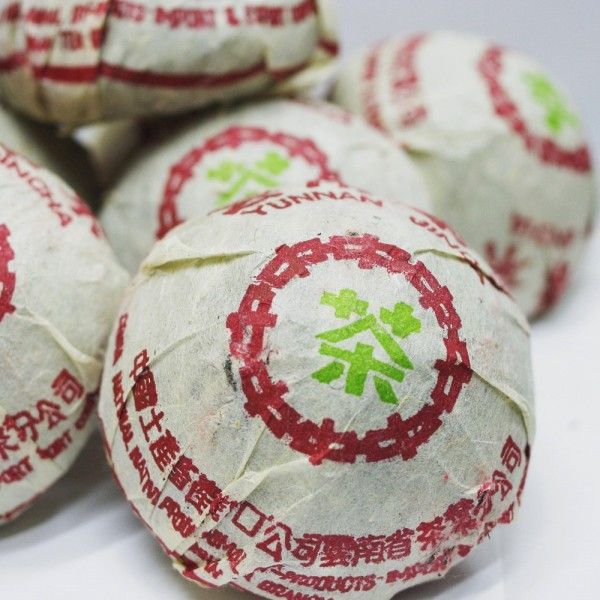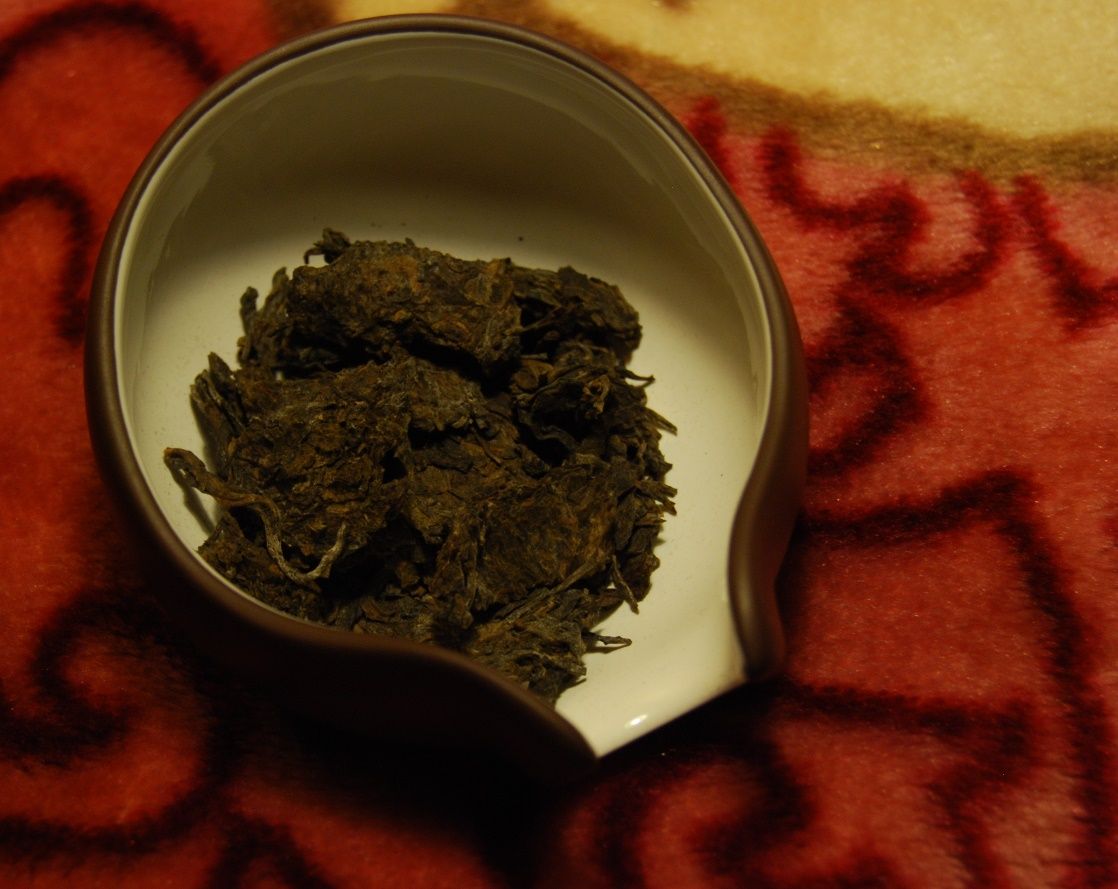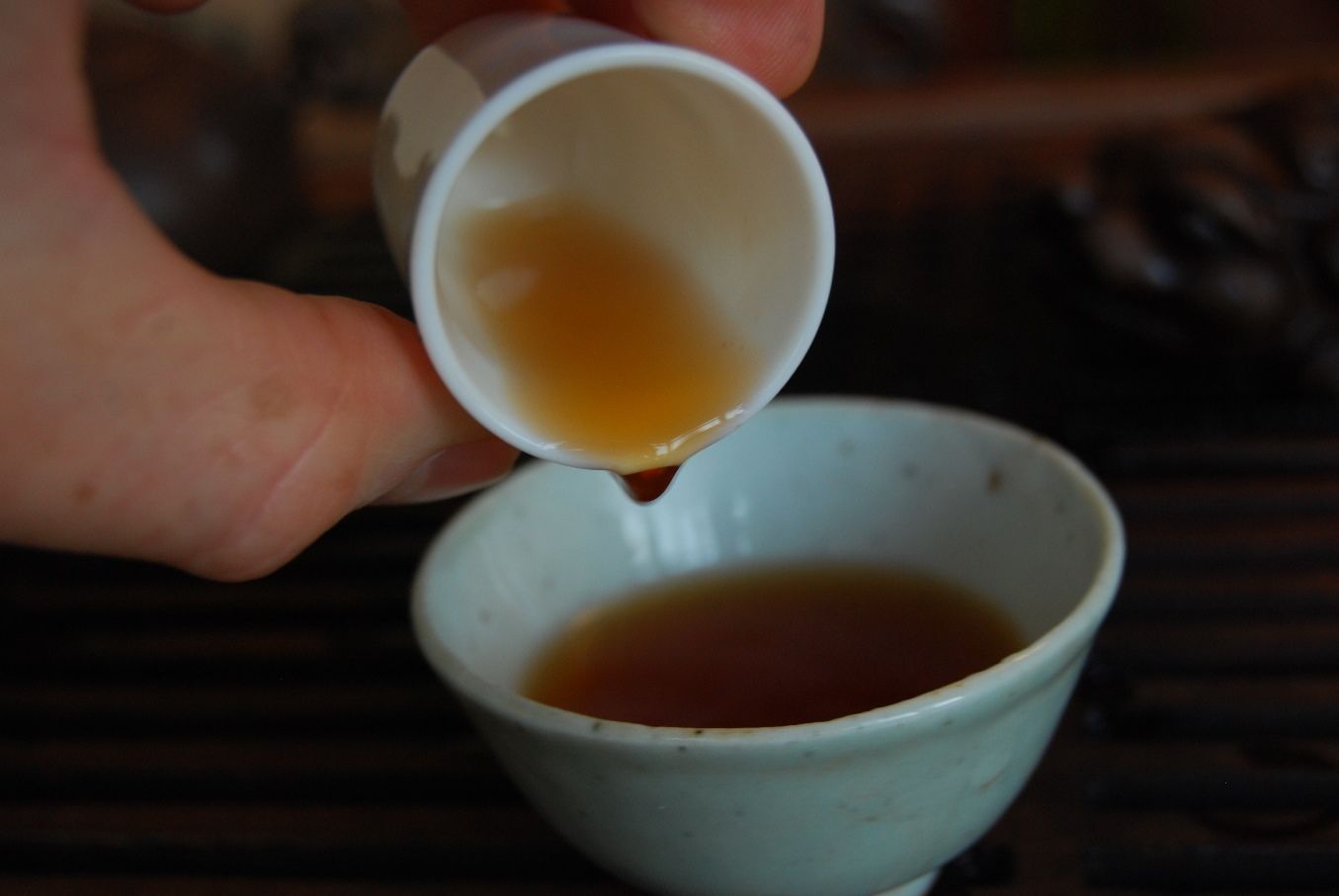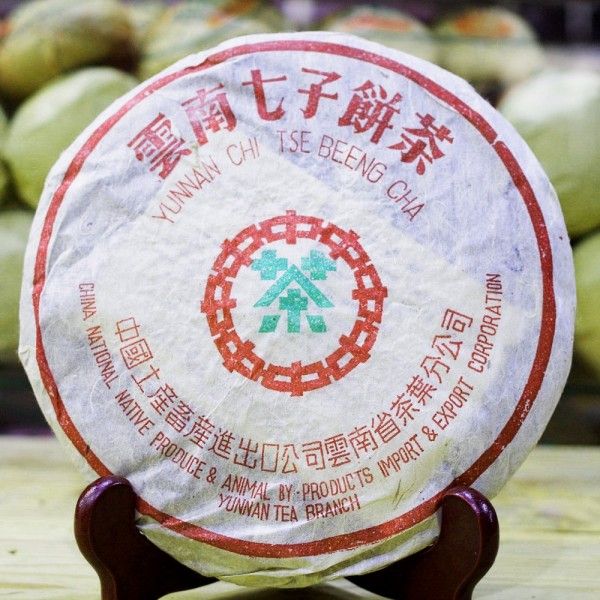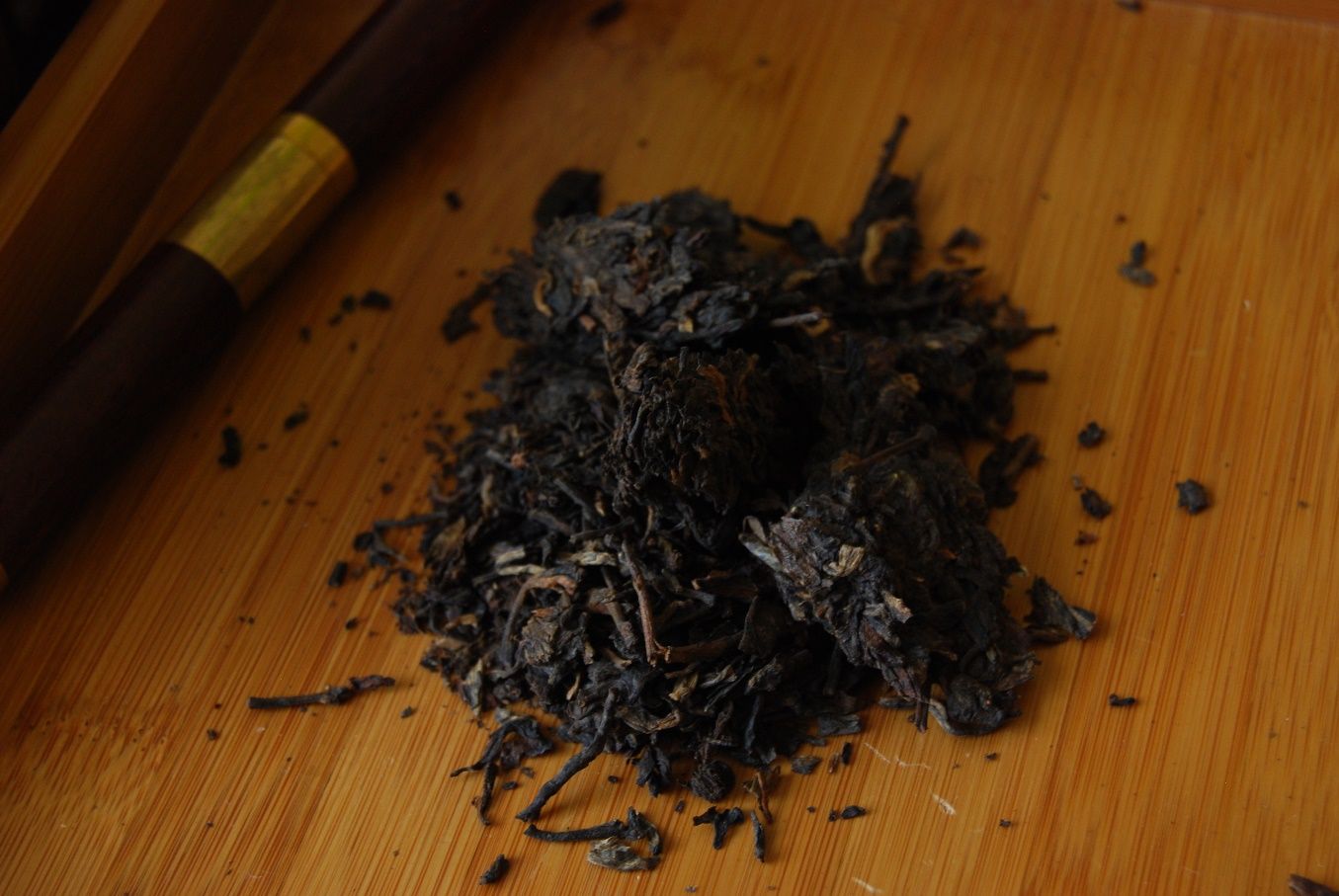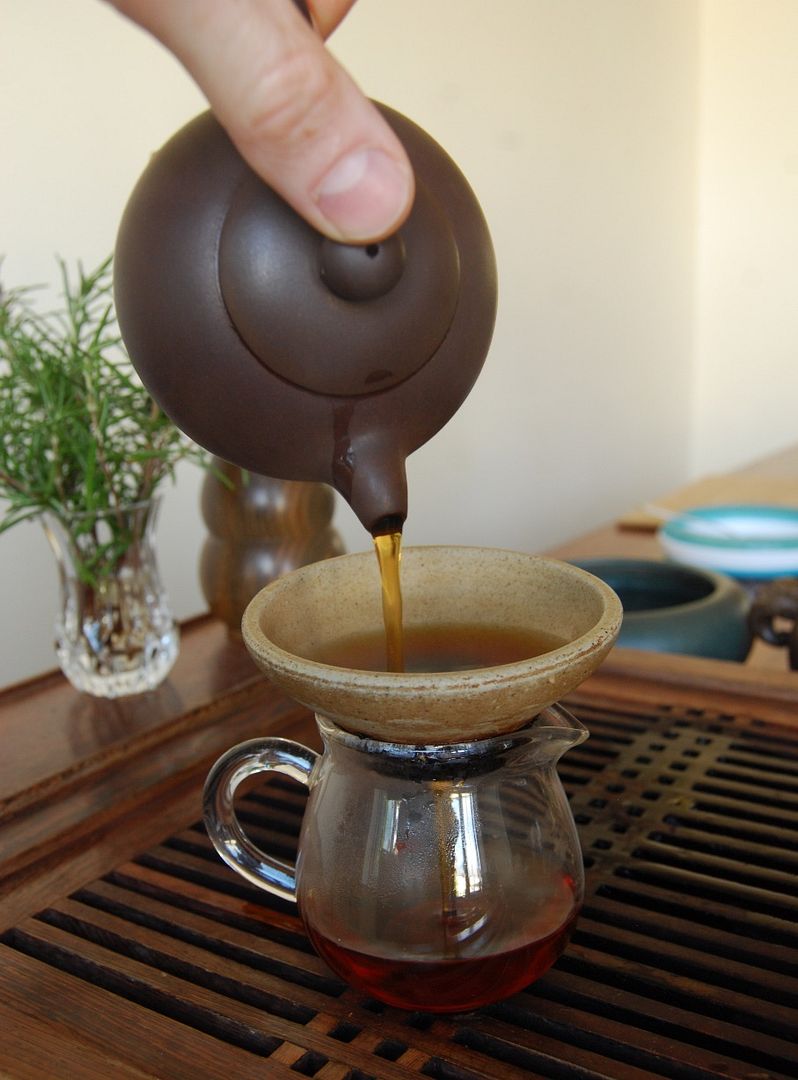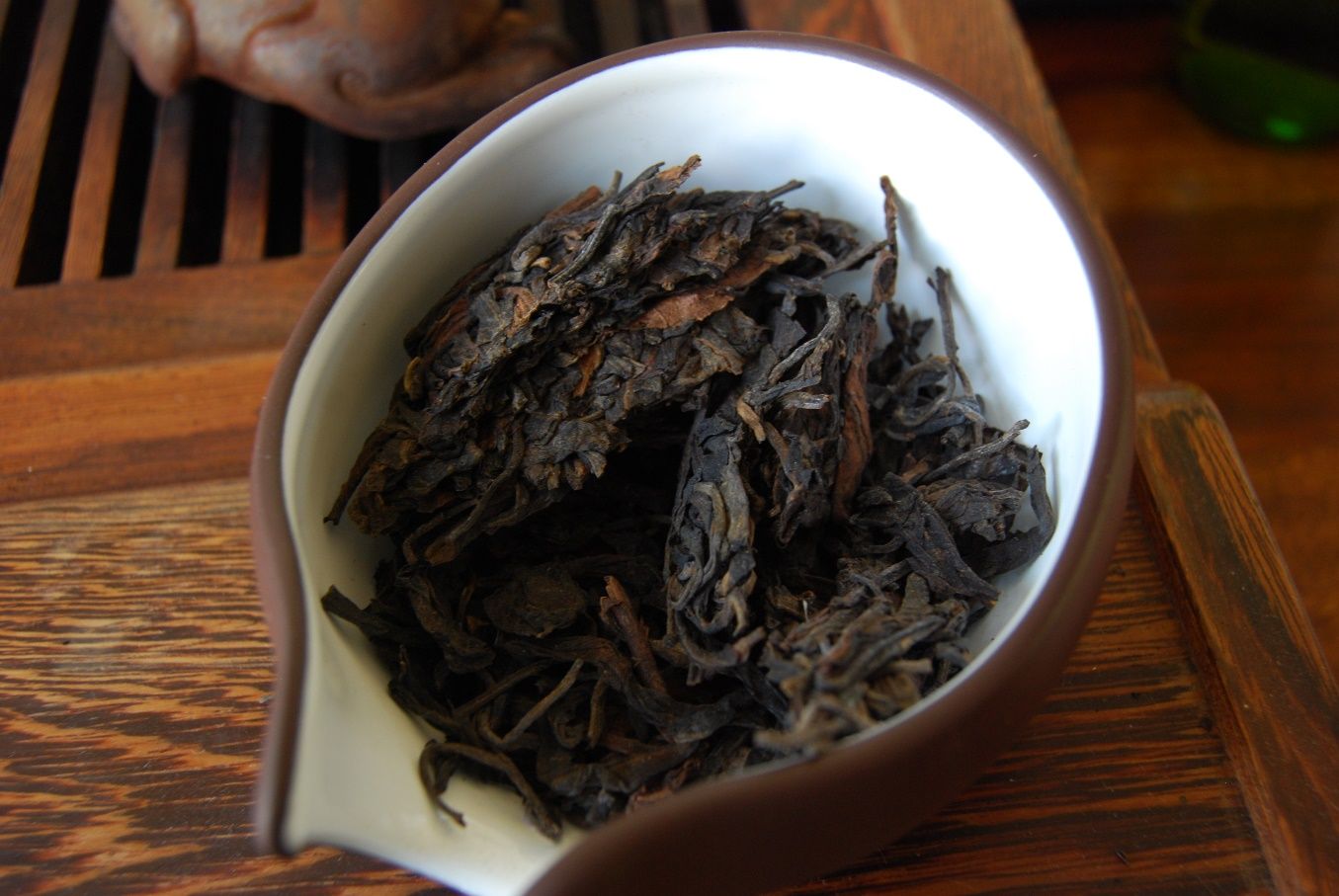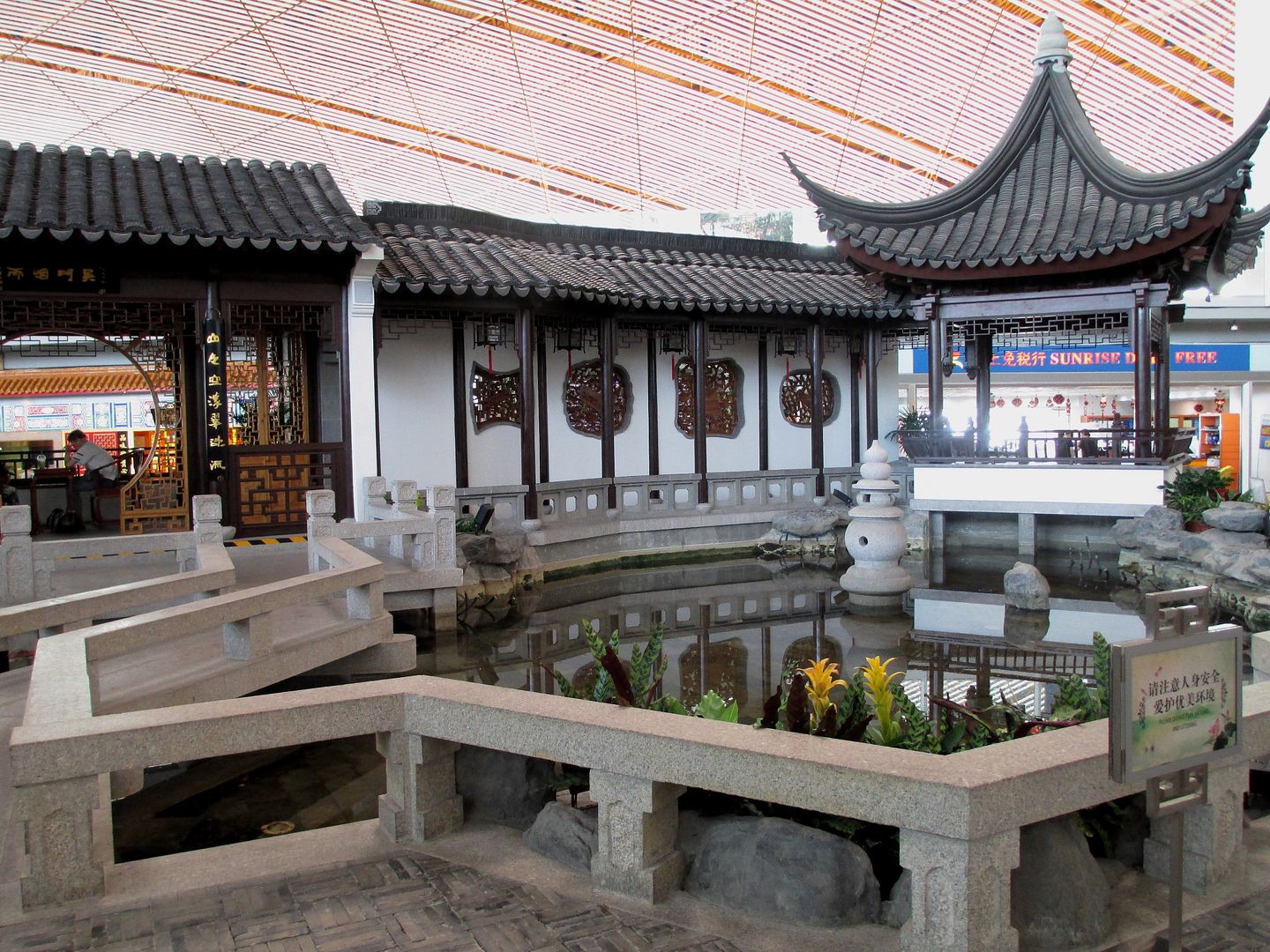Likewise, when someone asks you if you want to try seven samples of decent tea from around Yunnan, you say YES.
While we're on the subject, it is a truism that my entire childhood was changed when I first heard the following:
"Everything was fine until dickless here turned off the power grid."
"Is this true?"
"Yes it's true. This man has no dick."
"Is this true?"
"Yes it's true. This man has no dick."
I was never the same person again.
So, then. We've been annointed with samples from the chrsym of pu-erh.sk, sevenfold.
Beware of continental Europeans bearing gifts
When a man dumps samples on you, especially when that man is PETROS THE DESTROYER, proprietor of Pu-erh.sk, then you adopt a suitably grateful tone and doff your cap in deference.
Yes, they all look like this
We have, basically, seven different chunks to consider here. They all look fairly similar when brewed, and so let's take the image above to be representative of every single one of the seven different cakes that we'll be slurping our way through in the remainder of this missive. They're kind of yellow, they're kind of orange. Job done.
Wangongzhai
First up: the village so nice, they named it once. Wangongzhai. Chinese is a fantastic language, if you're a fan of parsable grammars / finite state machines. The name "wangongzhai" can be read one and only one way: wan + gong + zhai. There is no "ong" in Mandarin, so it's completely unambiguous. The reason I'm bothering you with this, Gentle Reader, is that I grew up in a land where (true story) the village name "Stiffkey" is pronounced "Stew-key". The pronounciation of "Leicester" (LESS-STER) is often thought to be a function of the Anglo-Saxon grammer that created it, but not so: in fact, it is pronounced that way because we like to chuckle at American tourists who can't pronounce our place-names.
So anyway, Wangongzhai. This is the only non-gushu cake that PETROS sells this year, and so (hoping that PETROS has his eyes closed here) it's the only cake that is likely to be priced at a level that isn't going to cause your wallet to go into spontaneous nuclear melt-down. Thus, it is priced at 30 Euro per 250g. How much is a Euro worth? God only knows. It's some dreadful continental invention, and its price seems to be related to how annoyed the Germans are with the nations of Greece and Portugal. You may conclude, Gentle Reader, that England is not in the Eurozone.
Unlike the financial system of continental Europe, this Wangongzhai is actually very pleasant. Again unlike continental Europe, it has a fruity and heavy scent that ends in a slug of rich aroma. It is pristine Eastern-Yiwu tea, which is exactly Wangongzhai's location - out there, near the border, far from everywhere. It explodes with a dominating mixture of fruit and bitterness, while being cooling afterwards.
The price is very reasonable and, unlike the financial system of continental Europe, I find myself rather well-disposed to this tea. Not enough to actually buy it, it must be said, but the effect was positive.
Nakashan
I admire the annual travels of PETROS THE DESTROYER, in which he seems to make wandering around Yunnan part of his life, the way WOTAN made wandering the Earth in a Gandalf-like guise part of his life. Am I suggesting that the owner of Pu-erh.sk is the father of the Norse gods? Well, what I will point out is that one never sees them together.
For heavens' sake, we get poxy films involving Thor and Loki, but where's the good stuff with Wotan? I'm not talking about Tolkien's knock-offs here, either. I want to see Wotan stomping some Fafnir, not a bunch of hobbits singing as if in some awful Broadway musical.
The tea: we are drinking Nakashan. We are back in gushu territory, for which read: ouchingly expensive. This particular example is a mere 107 Euro per 250g, which is approximately 9,000 USD per 357g equivalent. PETROS always makes good cakes, it must be said, but the prices are for your own consideration.
This tea is of the "warm bread" variety, with fresh, green flavours and good kuwei [useful bitterness]. It stands out in the mouth as being something rather special. I even wrote "It is an excellent tea, and I am in danger of falling in love with it. Given its extraordinary price, that would be dangerous indeed."
The comforting base is fruity and bready, soft, and yet dense. If Wotan ever deigned to drink pu'ercha, this'd be it.
Mannuo
Mannuo tea is never a good idea. Outside Yiwushan and Menghai region, I probably have more Mannuo tea than any other area, and it is always (i) great and (ii) greatly expensive. It's good, but it hurts. You have to drink Mannuo tea cognisant of the consequences. Your wallet will burn, with an inferno of which you cannot imagine.
Keeping up the ability of this year's cakes to cost as much as a small automobile, this cake weighs in at a seemly 107 Eurounits per 250g. "What a bargain", I can hear you think. And you'd be partly right - this is thick and sweet, far thicker than the Nakashan tea above. The dominating factor is a cooling gushu ninjitsu that does at least tell you where you spent all of your hard-earned currency.
For giggles, I decided to use the entire sample, and was rewarded with a super-thick and very buttery result. It has kuwei, and how, but it is well-integrated. The cooling edge gets under the tongue - it wedges right in there and makes it water. It is fine.
Panting for breath, I take my rest as my dear wife provides me with a new teathing from our garden. She is, like most fans of Hongloumeng, strictly against the practice of picking flowers, and these were windfalls.
Let's move on.
Yibangshan
Yibangshan tea is like Beaujolais Nouveau - fresh, cheerful, and goodness knows if it'll age or not. If your eyes were watering at the previous prices, then do please top up your tear-ducts before you read the price of this tea: 139 Euro per 250g. You could buy a large part of Cyprus for that. I'm pretty sure that price exceeds Portugal's GDP for last year.
Clean, fruity, with attendant Yibang sweetness, it finishes in a crisp kuwei that makes you wish it were priced at 2004 levels rather than 2014 levels. It is hard to get away from the price, which is a great pity because this is a very accomplished tea, both in selection and in processing.
It has a purple sweetness that is long-lived but which raises the figurative eyebrows when it comes to thinking about storage: how many "purple" tasting teas do you have that taste decent after a good number of years? Maybe my limited experience is nothing to go by, but purple teas: I don't trust 'em. Not that this is "purple leaf" - it is very much your standard green leaf - but it does taste significantly purple to me.
It is a complex tea that I like very much, and whose price causes me to mourn the modern market for our dear ol' pu'ercha.
Hekaishan
Yes, the above photograph is terrible. Yes, it was taken in the pre-dawn darkness after child-waking-daddy events in the night.
This is, like many of PETROS' teas, very cooling in that gushu sense. It has more gentle butteriness in the flavour, and its sweetness skewers the mouth quite noticeably. Resonant in the throat, this is a long-lasting tea, and it has a bitter, citric edge that keeps it complex without being too dominant. Lots of bitter, lots of sweetness, lots of mouth-watering gushu tang. It is crisp and well-defined.
Last year's Hekai tea was 52 Euro / 250g; this year, it is 91 Euro / 250g. I know the arguments, but still - this is a big step for twelve months.
Gedengshan
This looks amazing, it must be said. Look at those leaves. Real pu'ercha, right there. Then, inevitably, we are drawn to consider the price... oh, yikes. It is 161 Euro / 250g. In my diary, I wrote "This reminds me of the one bottle on the menuo that exists so that a crazy soul might spend their annual bonus."
Separating the tea from the price is a challenge, but we shall try. Gedengshan is one of the canonical mountains in Mengla County, and not a region that has contributed very much to the cakes on my shelves. This cake is soft, crisp, "bread-like", and smooth. Its gentle precision lasts well in the mouth, worthy of its straightforward yellow colour.
It approaches the dark scent of "xiang gu" mushrooms, which is a scent you'll never forget if you've encountered it. I wondered, in my diary, if I were to brew all of the 2014 Pu-erh.sk teas at once, and try them blinded, whether this would stand out as being worth is astro-galacto-exuberoprice. I concluded that I would not be able to identify this as being markedly better than its peers. Its pricing remains a mystery to me.
Yiwushan
Finally, we end with your friend and mine: Yiwushan. Oddly, it has huangpian in its blend - those broad, yellow leaves, pictured above.
This is a big, yellow tea in the old style, with the coloursweet sweetness of orthodox Yiwushan. I am obliged to increase the number of leaves in the pot to get it up to strength, which is unusual for young tea. Happily, the tea opens up after this, into a big and bold classic.
If relevant, it is priced at 118 Euro / 250g.
I feel as if I have been on a privileged tour of Yunnan with PETROS THE DESTROYER, during this round of recent teas. All, as ever, were well-made; the non-gushu tea may even be worth buying. I must be honest with you, Gentle Reader, for you would expect nothing else: for less money, one can buy some quite decent aged tea.
If prices are going to nearly double in one year (whether it be maocha prices or otherwise), I cannot be a part of that, as a point of personal principle. The cakes get smaller in size, the prices continue to rise... I can't imagine who is buying unaged cakes at this price. Surely business is not booming. It must be a difficult time to be a seller of unaged pu'ercha.












